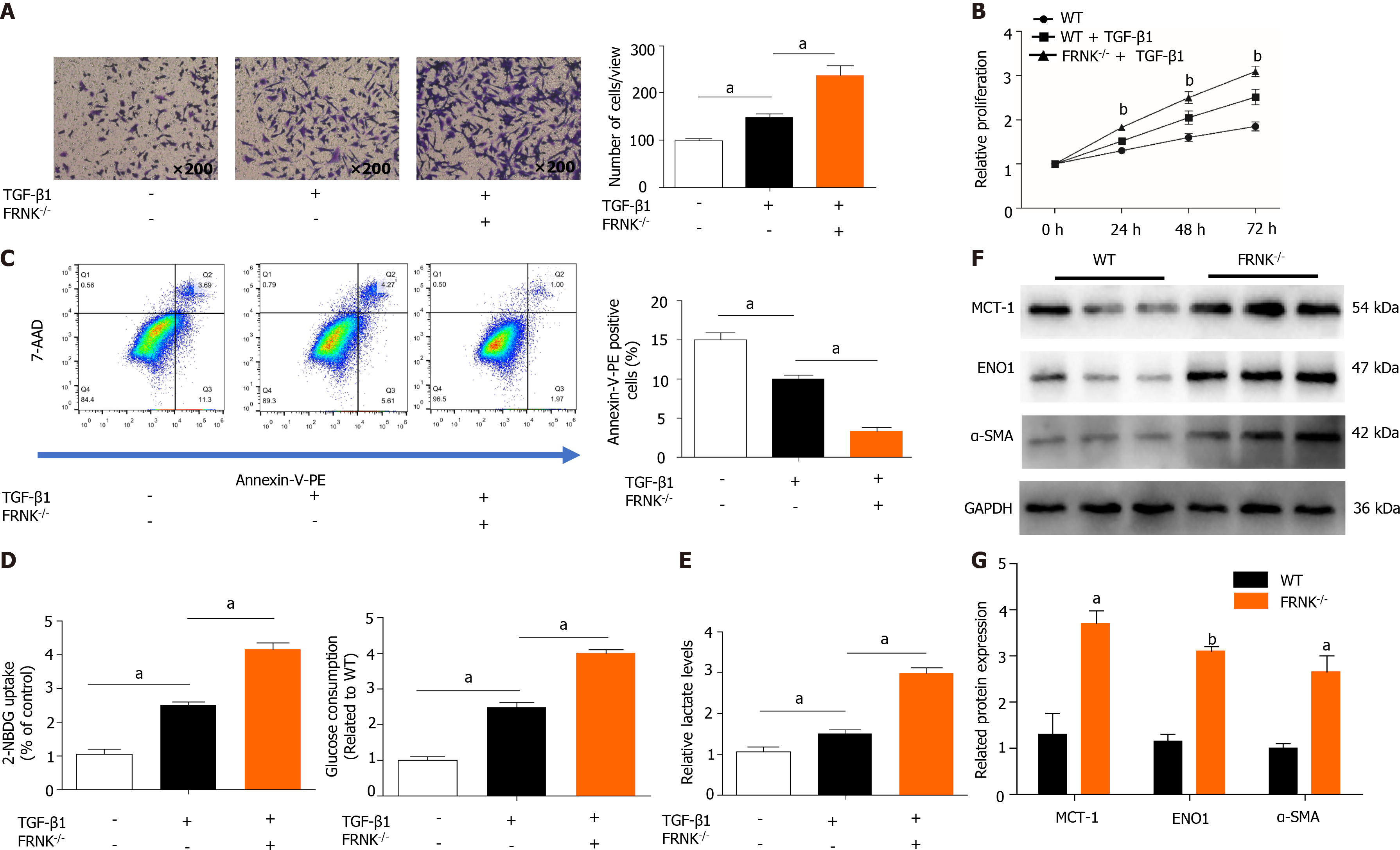Copyright
©The Author(s) 2022.
World J Gastroenterol. Jan 7, 2022; 28(1): 123-139
Published online Jan 7, 2022. doi: 10.3748/wjg.v28.i1.123
Published online Jan 7, 2022. doi: 10.3748/wjg.v28.i1.123
Figure 3 Knockout of FRNK promotes liver fibrosis and aerobic glycolysis in vitro.
A: After 36 h of culture with TGF-β1 (2 ng/mL), the migratory ability of primary hepatic stellate cells(pHSCs) was measured under a light microscope at × 200 magnification (105 cells per well); B: The proliferation of pHSCs was assessed with a CCK-8 assay; C: The apoptosis of pHSCs was analyzed using flow cytometry after 36 h of intervention; D and E: pHSCs cultured under the same intervention conditions were examined for glucose uptake and consumption, and lactate levels in the cell culture medium were also assessed; F and G: MCT-1, ENO1 and α-SMA levels in pHSCs were assessed using Western blotting. Representative results from three independent replicate assays are shown. aP < 0.05 and bP < 0.01 Results are presented as the mean ± SD.
- Citation: Huang T, Li YQX, Zhou MY, Hu RH, Zou GL, Li JC, Feng S, Liu YM, Xin CQ, Zhao XK. Focal adhesion kinase-related non-kinase ameliorates liver fibrosis by inhibiting aerobic glycolysis via the FAK/Ras/c-myc/ENO1 pathway. World J Gastroenterol 2022; 28(1): 123-139
- URL: https://www.wjgnet.com/1007-9327/full/v28/i1/123.htm
- DOI: https://dx.doi.org/10.3748/wjg.v28.i1.123









